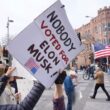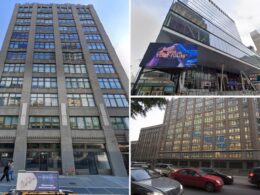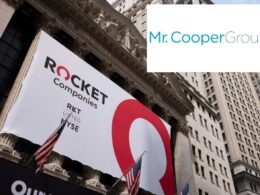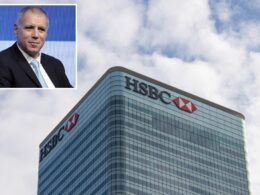Consumer spending rebounded in February amid rising prices for goods and services — a sign that the economy could face a period of slow growth while continuing to battle sticky inflation.
Consumer spending, which accounts for more than two-thirds of economic activity, climbed 0.4% after a downwardly revised 0.3% decline in January, the Commerce Department’s Bureau of Economic Analysis said Friday.
Economists polled by Reuters had forecast consumer spending gaining 0.5% after a previously reported 0.2% fall in January.
Meanwhile, the Personal Consumption Expenditures (PCE) price index — the Federal Reserve’s preferred gauge on inflation — increased 0.3% in February after advancing by an unrevised 0.3% in January, the Commerce Department said on Friday.
Economists had forecast the PCE price index gaining 0.3%.
The mixed bag of data comes as jitters mount over the impact on the economy over President Trump’s looming tariffs.
Federal Reserve Chair Jerome Powell acknowledged last week that inflation had started to rise “partly in response to tariffs,” adding that “there may be a delay in further progress over the course of this year.”
“The data support our view that downside risks to the economy are emerging, but with inflation heating up, the Fed for now will maintain its wait-and-see approach,” said Kathy Bostjancic, chief economist at Nationwide.
The Dow Jones Industrial Average dropped 450 points, or 1%, while the tech-heavy Nasdaq fell nearly 2% and the S&P 500 dipped 1.4%.
The well-telegraphed tariffs have sharply widened the trade deficit as businesses rushed to secure imports.
Consumers, also eager to avoid higher prices, front-loaded their spending, much of which took place in December.
The ebb in pre-emptive buying as well as unseasonably cold temperatures and snowstorms cooled spending at the start of the year.

Trump, who sees tariffs as a tool to raise revenue to offset his promised tax cuts and to revive a long-declining US industrial base, is planning to unveil a wave of reciprocal tariffs next week.
Economists, however, argue that the duties will be inflationary in the short run.
Stripping out the volatile food and energy components, the PCE price index rose 0.4% in February. That was the biggest gain since January 2024 and followed an unrevised 0.3% advance the prior month.
In the 12 months through February, core inflation increased 2.8% after rising 2.7% in January.
The central bank tracks the PCE price measures for its 2% inflation target. The Fed last week left its benchmark overnight interest rate unchanged in the 4.25%-4.50% range. Financial markets expect it to resume its easing cycle in June.
When adjusted for inflation, consumer spending edged up 0.1% after declining 0.6% in January.








